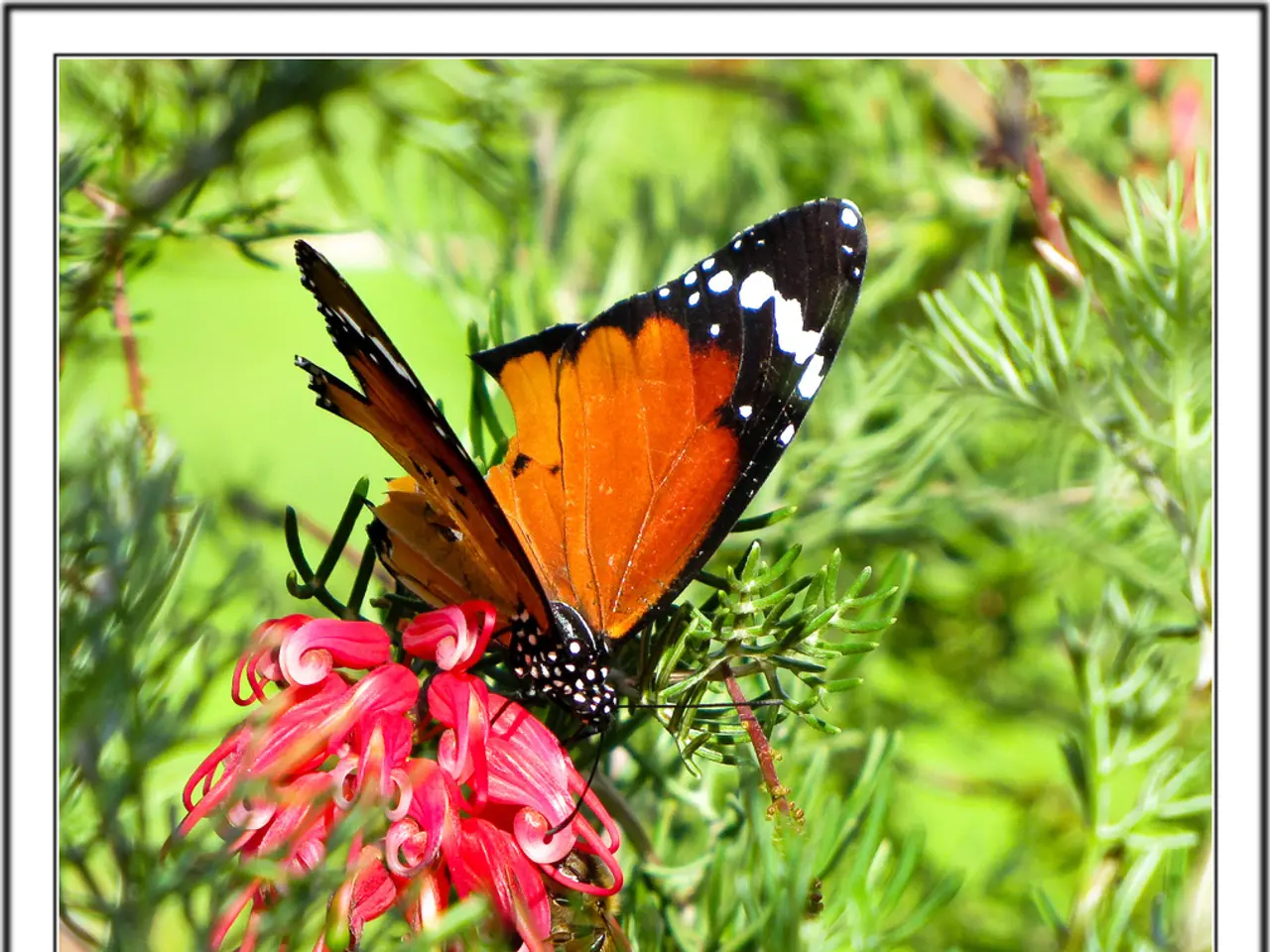Guideline for Supporting Monarch Butterflies: Easy Steps to Take
The vibrant monarch butterfly, with its iconic orange and black wings, is a beloved symbol of nature. However, over the last 20 years, these beautiful creatures have faced significant threats, including habitat loss, pesticide use, climate change, disease, parasites, and overwintering habitat degradation.
But there's hope. Gardeners can play a crucial role in supporting monarch butterfly populations and ensuring their survival for future generations.
Plant Native Milkweed
Growing native species of milkweed, such as common milkweed, swamp milkweed, or butterfly milkweed, provides essential breeding habitat for monarch caterpillars. These plants are the sole host plants for monarchs, offering them a vital food source.
Create Pollinator-friendly Gardens
To feed adult monarchs and other pollinators, include a variety of nectar-rich native flowers that bloom throughout the growing season. Some excellent choices are liatris, aster, goldenrod, ironweed, liatris, Joe-Pye weed, mountain mint, and purple coneflower. Grouping plants together in clumps attracts butterflies.
Avoid Pesticides and Herbicides
Minimizing or eliminating the use of chemical pesticides and herbicides is essential to protect monarchs and their host plants. In gardens and conservation areas, avoid the use of pesticides on milkweed and nectar plants. Instead, opt for an integrated pest management (IPM) approach to reduce pest pressure.
Provide Habitat Connectivity
Establish or maintain corridors of native plants to support monarch movement and migration. These corridors help create a network of suitable habitats, allowing monarchs to travel from their breeding grounds to their overwintering sites.
Support Conservation Efforts
Participate in local monarch monitoring programs or habitat restoration initiatives. Your involvement can make a difference in preserving these beautiful insects' habitats.
Additional Tips
- Liatris is another native plant that provides copious nectar to adult monarchs. Avoid planting tropical (annual) milkweed species, which can harbor pests and may delay migration.
- Milkweed and other native nectar sources thrive in full sun.
- Resources to learn more about monarchs include Monarch Butterfly Journey North, Monarch Joint Venture, Pollinator Partnership, and Xerces Society for Invertebrate Conservation.
- Communicate with managers of roadsides and rights-of-way about the need for more milkweed and nectar plants.
- Avoid summer mowing of milkweed stands to protect developing butterflies.
By adopting these practices, gardeners can help conserve monarch butterflies and contribute to their continued existence in our gardens and beyond.
Read also:
- Exiled Life's Conundrum: A Blend of Liberation, Disillusionment, and Distress
- Student Highlight at Scripps College: Jessica Sportelli
- Tobacco Use and Oral Cancer: Potential Dangers, Initial Symptoms, and Cessation Strategies
- Heart Attack Due to Severely Reduced Blood Flow (STEMI): Recognizing Signs and Further Details





